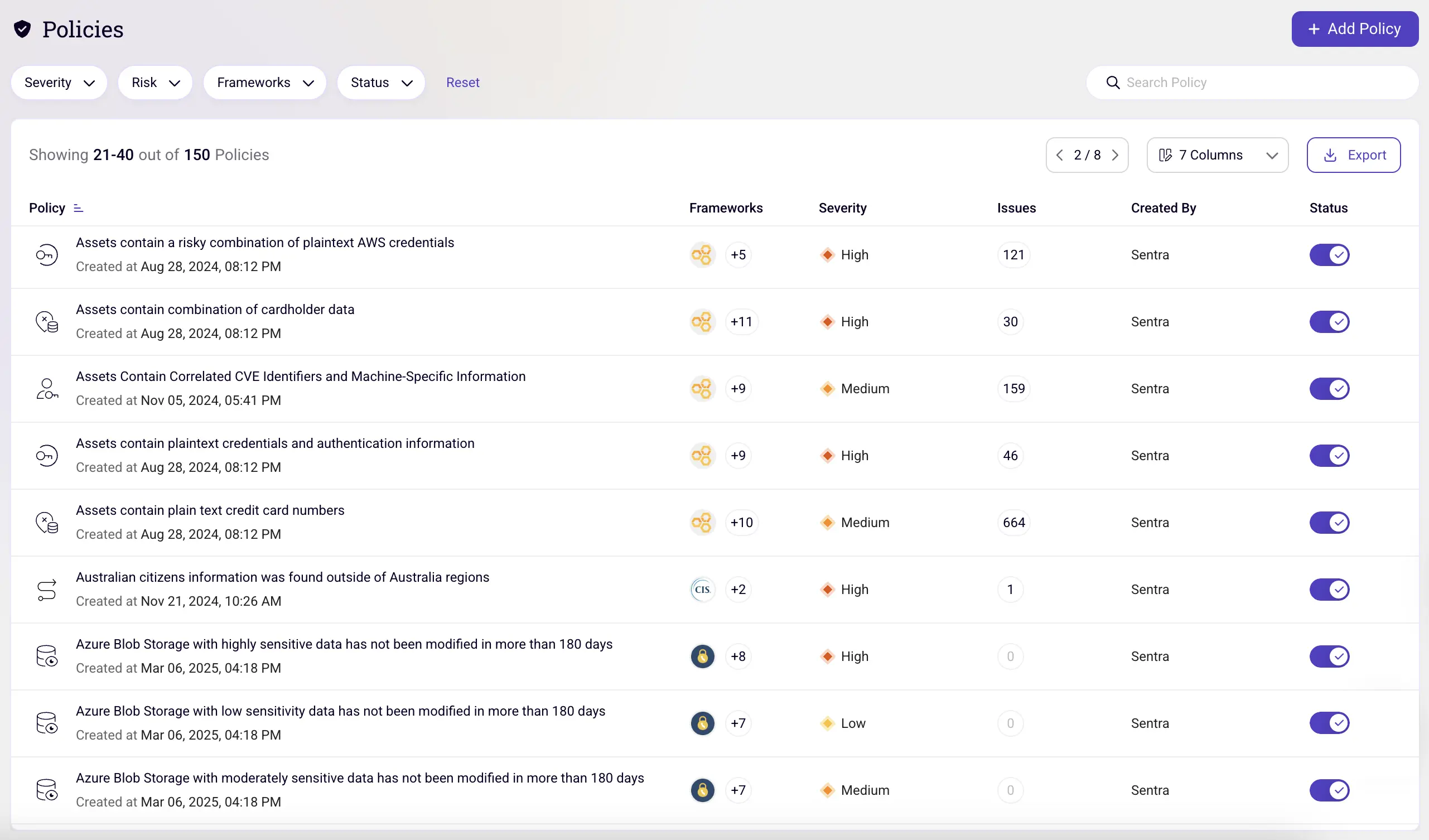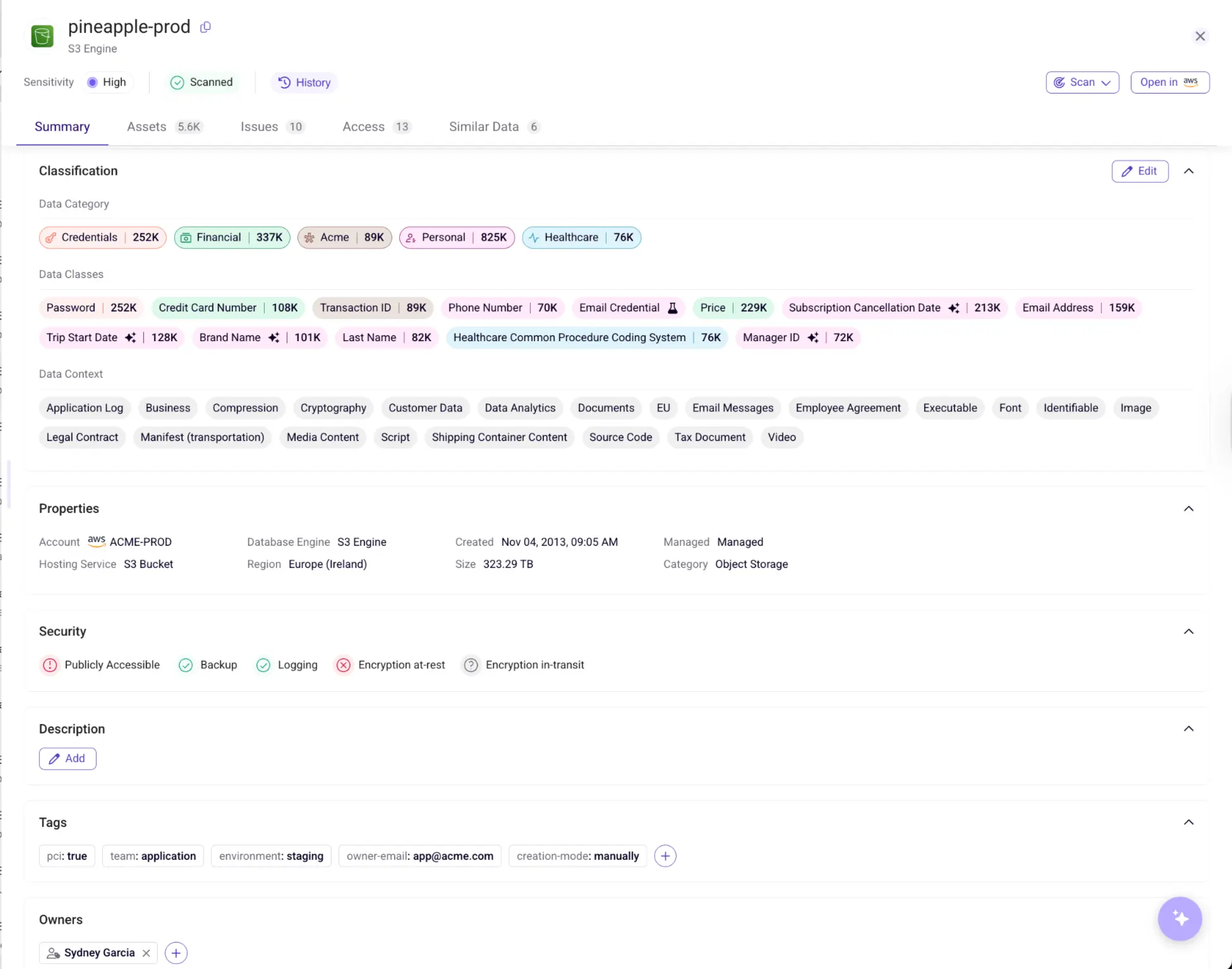DSPM vs Legacy Data Security Tools
Businesses must understand where and how their sensitive data is used in their ever-changing data estates because the stakes are higher than ever. IBM’s Cost of a Data Breach 2023 report found that the average global cost of a data breach in 2023 was $4.45 million. And with the rise in generative AI tools, malicious actors develop new attacks and find security vulnerabilities quicker than ever before.
Even if your organization doesn’t experience a data breach, growing data and privacy regulations could negatively impact your business’s bottom line if not heeded.
With all of these factors in play, why haven’t many businesses up-leveled their data security and risen to the new challenges? In many cases, it’s because they are leveraging outdated technologies to secure a modern cloud environment. Tools designed for on premises environments often produce too many false positives, require manual setup and constant reconfiguration, and lack complete visibility into multi-cloud environments.
To answer these liabilities, many businesses are turning to data security posture management (DSPM), a relatively new approach to data security that focuses on securing data wherever it goes despite the underlying infrastructure.
Can Legacy Tools Enable Today’s Data Security Best Practices?
As today’s teams look to secure their ever-evolving cloud data stores, a few specific requirements arise. Let’s see how these modern requirements stack up with legacy tools’ capabilities:
Compatibility with a Multi-Cloud Environment
Today, the average organization uses several connected databases, technologies, and storage methods to host its data and operations. Its data estate will likely consist of SaaS applications, a few cloud instances, and, in some cases, on premises data centers.
Legacy tools are incompatible with many multi-cloud environments because:
- They cannot recognize all the moving parts of a modern cloud environment and treat cloud and SaaS technologies as though they are full members of the IT ecosystem. They may flag normal cloud operations as threats, leading to lots of false positives and noisy alerts.
- They are difficult to maintain in a sprawling cloud environment, as they often require teams to manually configure a connector for each data store. When an organization is spinning up cloud resources rapidly and must connect dozens of stores daily, this process takes tons of effort and limits security, scalability and agility.
Continuous Threat Detection
In addition, today’s businesses need security measures that can keep up with emerging threats. Malicious actors are constantly finding new ways to commit data breaches. For example, generative AI can be used to scan an organization’s environment and identify any weaknesses with unprecedented speed and accuracy. In addition, LLMs often create internal threats which are more prevalent because so many employees have access to sensitive data.
Legacy tools cannot respond adequately to these growing threats because:
- They use signature-based malware detection to detect and contain threats.
- This technique for detecting risk will inevitably miss novel threats and more nuanced risks within SaaS and cloud environments.
Data-Centric Security Approach
Today’s teams also need a data-centric approach to security. Data democratization happens in most businesses (which is a good thing!). However, this democratization comes with a cost, as it allows any number of employees to access, move, and copy sensitive data.
In addition, newer applications that feature lots of AI and automation require massive amounts of data to function. As they perform tasks within businesses, these modern applications will share, copy, and transform data at a rapid speed — often at a scale unmanageable via manual processes.
As a result, sensitive data proliferates everywhere in the organization, whether within cloud storage like SharePoint, as part of data pipelines for modern applications, or even as downloaded files on an employee’s computer.
Legacy tools tend to be ineffective in finding data across the organization because:
- Legacy tools’ best defense against this proliferation is to block any actions that look risky. These hyperactive security defenses become “red tape” for employees or connected applications that just need to access the data to do their jobs.
- They also trigger false alarms frequently and tend to miss important signals, such as suspicious activities in SaaS applications.
Accurate Data Classification
Modern organizations also need the ability to classify discovered data in precise and granular ways. The likelihood of exposure for any given data will depend on several contextual factors, including location, usage, and the level of security surrounding it.
Legacy tools fall short in this area because:
- They cannot classify data with this level of granularity, which, again, leads to false positives and noisy alerts.
- There is inadequate data context to determine the true sensitivity based on business use
- Many tools also require agents or sidecars to start classifying data, which requires extensive time and work to set up and maintain.
Big-Picture Visibility of Risk
Organizations require a big-picture view of data context, movement, and risk to successfully monitor the entire data estate. This is especially important because the risk landscape in a modern data environment is extremely prone to change. In addition, many data and privacy regulations require businesses to understand how and where they leverage PII.
Legacy tools make it difficult for organizations to stay on top of these changes because:
- Legacy tools can only monitor data stored in on premises storage and SaaS applications, leaving cloud technologies like IaaS and PaaS unaccounted for.
- Legacy tools fail to meet emerging regulations. For example, a new addendum to GDPR requires companies to tell individuals how and where they leverage their personal data. It’s difficult to follow these guidelines if you can’t figure out where this sensitive data resides in the first place.
Data Security Posture Management (DSPM): A Modern Approach
As we can see, legacy data security tools lack key functionality to meet the demands of a modern hybrid environment. Instead, today’s organizations need a solution that can secure all areas of their data estate — cloud, on premises, SaaS applications, and more.
Data Security Posture Management (also known as DSPM) is a modern approach that works alongside the complexity and breadth of a modern cloud environment. It offers automated data discovery and classification, continuous monitoring of data movement and access, and a deep focus on data-centric security that goes far beyond just defending network perimeters.
Key Features of Legacy Data Security Tools vs. DSPM
But how does DSPM stack up against some specific legacy tools? Let’s dive into some one-to-one comparisons.

How does DSPM integrate with existing security tools?
DSPM integrates seamlessly with other security tools, such as team collaboration tools (Microsoft Teams, Slack, etc.), observability tools (Datadog), security and incident response tools (such as SIEMs, SOARs, and Jira/ServiceNow ITSM), and more.

Can DSPM help my existing data loss prevention system?
DSPM integrates with existing DLP solutions, providing rich context regarding data sensitivity that can be used to better prioritize remediation efforts/actions. DSPM provides accurate, granular sensitivity labels that can facilitate confident automated actions and better streamline processes.
What are the benefits of using DSPM?
DSPM enables businesses to take a proactive approach to data security, leading to:
- Reduced risk of data breaches
- Improved compliance posture
- Faster incident response times
- Optimized security resource allocation
Embrace DSPM for a Future-Proof Security Strategy
Embracing DSPM for your organization doesn’t just support your proactive security initiatives today; it ensures that your data security measures will scale up with your business’s growth tomorrow. Because today’s data estates evolve so rapidly — both in number of components and in data proliferation — it’s in your business’s best interest to find cloud-native solutions that will adapt to these changes seamlessly.
Learn how Sentra’s DSPM can help your team gain data visibility within minutes of deployment.










.webp)

.webp)




